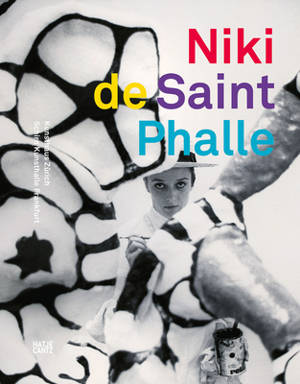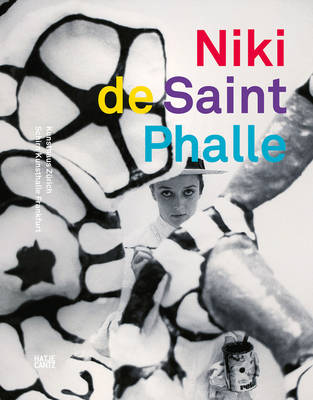
- Afhalen na 1 uur in een winkel met voorraad
- Gratis thuislevering in België vanaf € 30
- Ruim aanbod met 7 miljoen producten
- Afhalen na 1 uur in een winkel met voorraad
- Gratis thuislevering in België vanaf € 30
- Ruim aanbod met 7 miljoen producten
Niki de Saint Phalle: The Retrospective
Cathérine Hug, Katharina Dohm, Sandra Gianfreda, Margrit Hahnloser-Ingold, Rhiannon AshOmschrijving
On Saint Phalle's radical art as social and institutional critique
Niki de Saint Phalle's sensual Nanas--colorful, buxom female figures--laid the foundation for her international success beyond the art world. But the self-taught artist's creative spectrum is much broader, and her unconventional oeuvre--ranging from painting and drawing to assemblages, performances, theater, film and architecture--is more subversive and critical of society than is widely assumed. Based in part on her efforts to process her own experiences, Saint Phalle addressed social and political issues, critically questioning institutions and role models in ways that are as relevant today as they have ever been. This publication sheds new light on the artist's exceptional personality and uncovers an oeuvre that is always surprising and eccentric, emotional, dark and brutal, humorous and cheerful.
Niki de Saint Phalle (1930-2002) was born near Paris and moved to the US in 1933. During her teen years, Saint Phalle was a fashion model and appeared on the cover of Life in 1949 and, three years later, on the cover of French Vogue. At 18 Saint Phalle eloped with author Harry Mathews and moved to Cambridge, Massachusetts, and later to Paris, where she exhibited at the Alexander Iolas Gallery. In 1971 Saint Phalle married Jean Tinguely, and throughout that decade created the public sculptures and parks for which she became celebrated. Saint Phalle died of emphysema in California in May 2002.
Specificaties
Betrokkenen
- Auteur(s):
- Uitgeverij:
Inhoud
- Aantal bladzijden:
- 240
- Taal:
- Engels
Eigenschappen
- Productcode (EAN):
- 9783775753005
- Verschijningsdatum:
- 15/11/2022
- Uitvoering:
- Paperback
- Formaat:
- Trade paperback (VS)
- Afmetingen:
- 234 mm x 290 mm
- Gewicht:
- 1279 g

Alleen bij Standaard Boekhandel
Beoordelingen
We publiceren alleen reviews die voldoen aan de voorwaarden voor reviews. Bekijk onze voorwaarden voor reviews.











